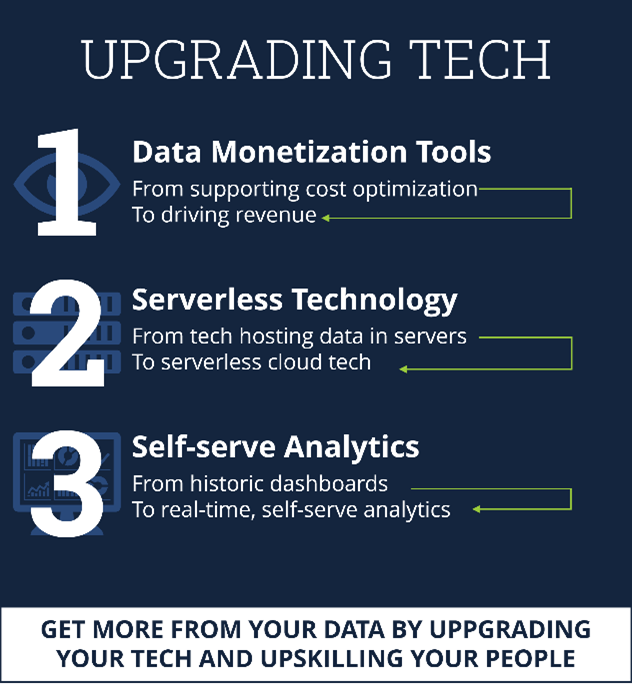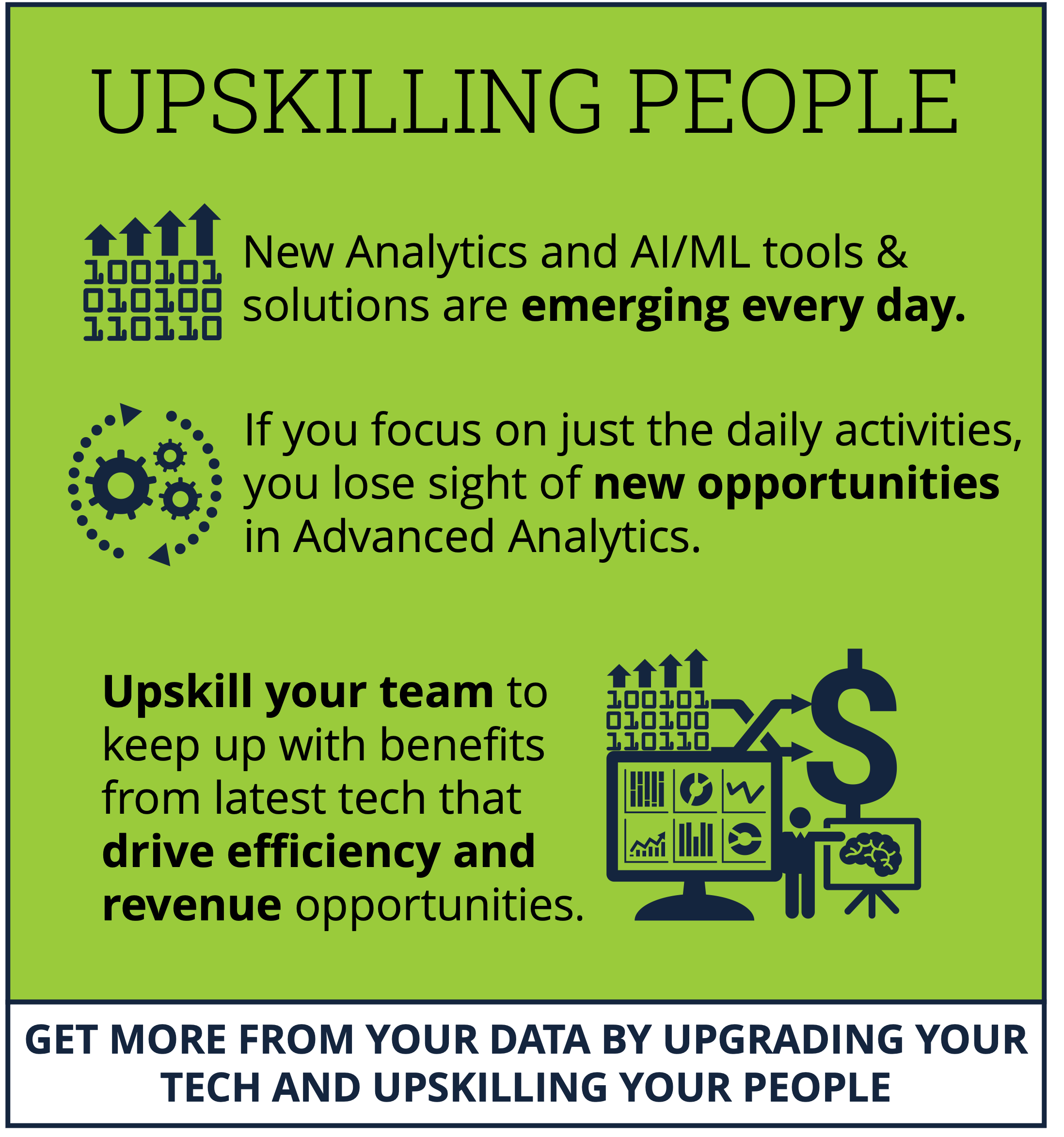Yes, analytics, data science and AI/ML are the rage. And actionable insights are the El Dorado, where the proverbial treasure will manifest in big savings, bigger revenues and of course, customer delight.
But advances in analytics are struggling to keep up with the speed of business. How can you upgrade quickly enough and, more importantly, how do you upskill entire teams in keeping with the pace of technological change? This has become the talk of the “advanced analytics” town. Want your company to see a rise in profits? Upskill. Want your team to deliver that new, updated and sought-after service line? Once again, upskill.
This is anything but easy. But it can be made simple. Let’s look at some of the challenges and solutions for enterprises today.
Leveraging the latest in analytics technology
 While building analytics capability is essential to accommodate multi-faceted demands of your business, leveraging the latest in technology is a challenge. Merely getting hold of the latest update of the product(s) does not cut it anymore. You must also update and upgrade your:
While building analytics capability is essential to accommodate multi-faceted demands of your business, leveraging the latest in technology is a challenge. Merely getting hold of the latest update of the product(s) does not cut it anymore. You must also update and upgrade your:
- technical knowledge of your team(s)
- problem-identification capabilities
- methodologies, processes and techniques
- industry knowledge, including best practices
- use cases
- customer focus, rooted in empathy learning
- post-implementation support
And just sending your teams for mandatory product training is not enough. You need focused and continuous coaching – technical, functional and even behavioral. A culture focused on customer experience is what every analytics team needs. And let’s not forget the tough balance between training and forecasting. Hire more people, and you have resources waiting for challenging work to do. Hire fewer, and your project suffers.
Modernizing your tech in terms of building analytics capability is not easy given the needs around quality, quantity and variety of skills needed. Add to that the talent shortage, especially in key markets like India and North America. The skills are there, but a booming market makes the employer’s job tough.
How to boost your analytics capabilities
Let us start with the storage conundrum. How much is enough, really?
As cloud-based storage models become the norm, an enterprise must spend greater and greater percentages of its tech budget on cloud space. It needs storage not only for servicing the customer but also for training its teams.
A joke in the technology world is that real stress is not when you get the office rental invoice or on employee payday but when you get the cloud service provider (CSP) bill. Cloud spend can hit the company hard!
We often hear clients test the theory that dashboards and servers are dead. They want real-time self-serve analytics. This means a complete shift to predictive analytics, lots of real-time actionable insights and less costs. Right?
Wrong!
Even if servers are dead, serverless technology and cloud aren’t exactly cheap. And dashboards are not really dead. Predictive analytics is the future (pun intended), prescriptive analytics is the present. But descriptive analytics (and hence dashboards) is still alive and well in many companies.
As much as we want to bid goodbye to servers and dashboards and move on to real-time computing, companies must first turn insights into actions. This means giving up storage and depending only on real-time inputs and insights. Is your company ready to do that? Very few are.
 In the meantime, you do need storage plus real-time computing, which means you need more than before. More storage and, hence, more costs. Of course, the benefits of insights will offset some of these costs, but you need to budget the gestation period for benefits to kick in.
In the meantime, you do need storage plus real-time computing, which means you need more than before. More storage and, hence, more costs. Of course, the benefits of insights will offset some of these costs, but you need to budget the gestation period for benefits to kick in.
There are no “one size fits all” solutions to this upskilling and upgrading challenge. ISG has some basic guidelines for clients and service providers alike to address this.
- Spend on people, technology and processes is inevitable but a focus on ROI is essential.
- Technology evolves, but basics like storage and dashboards will live on. They will evolve but never die.
- Attrition is real, but so is the need for upskilling. These two dynamics must be balanced. You can alleviate the talent crunch and attrition issues by:
- Hiring to build diversity of thoughts, cultures, backgrounds, industries and education
- Promoting a culture of belonging, purpose and achievement in teams
Want to discuss the latest trends around upskilling or upgrading in analytics? Or want to discuss a specific challenge in this space? We are always up for a chat. Reach out to us here.
